Some people enjoy walking in the rain, on the autumn leaves, in a lonely street, or anywhere else for that matter. Walking combines all of these positive emotions. What percentage of our everyday activities involve walking? Many believe that it is in the hearts of others to conduct a more thorough scientific investigation. In any case, having air in our feet appears to be important. How can the health of your feet be checked? What risks put foot health at risk? Who is the foot doctor and where should we go for foot care? What is a good shoes for our feet?
In this article, we’ll get to know our feet and study what makes them uncomfortable in basic way.
1) Foot health and the type of foot
The 26 total bones and 33 joints in the ankles and plantar are a common feature of human feet. Different people have different foot arches and toe shapes, which vary depending on heredity, weight, age, and other variables.
The plantar is divided into three types based on the arch height: flat feet, normal feet, and high-arched feet. While there are many things we can do to keep our feet healthy, in some situations, a foot examination from a foot health expert is crucial to identifying the issue. A chiropodist and a podiatrist are foot doctors who both look at foot problems and care for foot health.
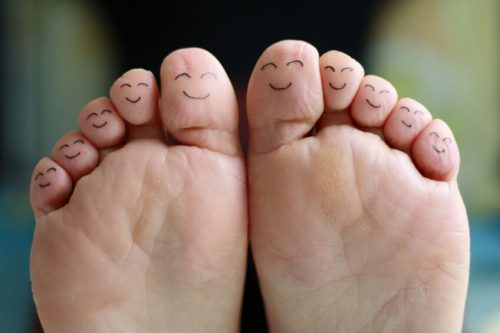
2) Skin problems and good shoes
Foot sweat can cause itching, irritation, and eczema (a skin condition that causes itching, dry skin, rashes, skin infections, and scaly patches). Nylon socks, plastic shoes, and tight shoes increase foot sweat and worsen skin conditions because they prevent the foot from drying out correctly. Changing your socks regularly and giving your shoes time to dry after each use are two easy but crucial ways to prevent sweaty feet. Also, the moisture in the foot is absorbed when wearing thick, breathable, and soft cotton socks.
Especially athlete’s foot, usually between the toes, is prone to fungal infection. A fungal infection of the foot typically refers to tinea pedis, also known as athlete’s foot or foot ringworm foot. Fungus between the toes is a common problem among those who are very active. Athletes should constantly observe foot hygiene and use antifungal powders and lotions.
Make sure your shoes are the right size. Wearing the wrong shoes might raise your risk of developing corns, bunions, hammertoes, and plantar fasciitis, as well as ankle problems. So, pay attention to these things:
- Use cotton socks
- Wear the right shoe size
- Do not use plastic shoes that do not breathable
- Change socks regularly
- Use antifungal powders and lotions if our activity is too much
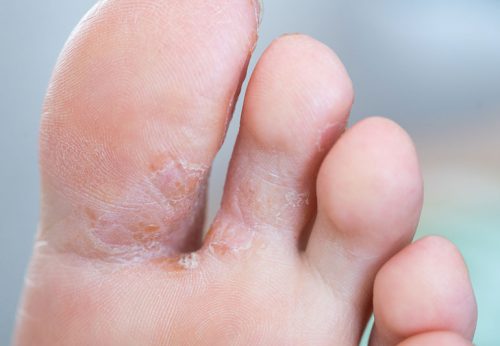
3) Toenails and good shoes
Ingrown toenails are a common condition in which the corner or side of a toenail grows into soft flesh. The result is pain, inflamed skin, swelling, and sometimes infection.
We all need to cut our toenails every six to eight weeks. We must do some things before cutting our toenails, such as using the right tools, taking a bath before it, cutting straight across the nails, filing the edges, and keeping our tools clean. And about cuticles, you must leave them alone. They are a layer of clear skin located along the bottom edge of your finger or toe. They protect the nail root, so it’s best not to cut or push back the cuticles.
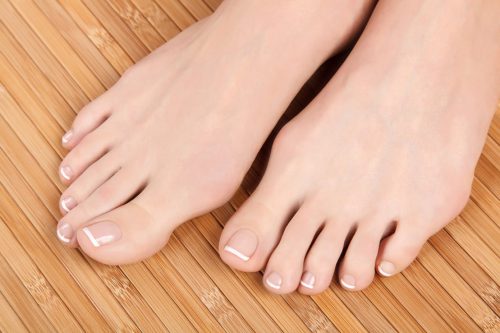
3-1) Nail fungus infection
Fungal nail infections, also known as “onychomycosis,” are very common. It may cause nails to become thick, discolored, fragile, cracked, and misshapen. The nail may also become separated from the nail bed. In some cases, patients experience pain too. So, if you feel foot pain after wearing shoes, make sure that your toenails are not infected.
The most effective course of treatment for nail fungus infections is to begin early. The most effective treatment for fungal nail infections is frequently the oral administration of prescription antifungal medications. In a serious condition, a podiatrist or other specialist might completely remove the nail. The issue may take several months to a year to go away.
Fungal skin infections and fungal nail infections can often occur together. A fungal infection can spread from one location to another if it is not treated. To ensure that all fungal infections are correctly treated, patients should discuss any skin problems with their healthcare provider.
4) Leg fracture and leg sprain
A toe injury may be more serious than a superficial injury. If you have swelling, distortion, or pain following an injury for more than two or three days, there is probably a fracture in this area. Big toe fractures, especially, can cause severe pain. Sprained ankles are so common. If you have foot pain or ankle swelling while moving, a precise X-ray is needed to identify whether you have a fracture.
5) Deviation of the big toe and good shoes
Hallux valgus (bunion) is a deformity of the big toe that can make walking difficult and painful. The big toe deviates toward the second toe in this position. Shoes that are too tight, connective tissue, a short Achilles tendon, and short calf muscles that are weak are potential causes. Often, conservative treatments like physiotherapy, a hallux valgus splint, well-fitting shoes, physiotherapy, and painkillers can help relieve the symptoms.
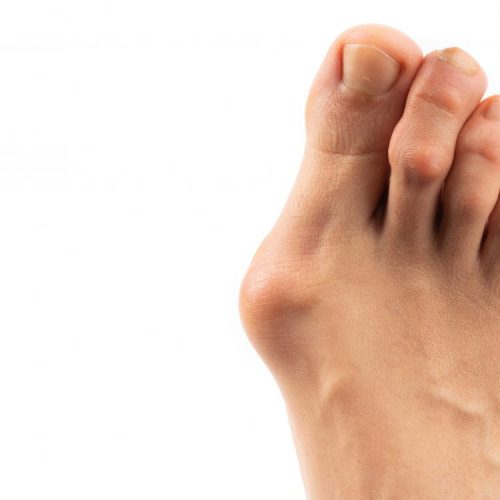
6) Callus, hammer toe and crooked toes
Calluses usually develop on pressure points like the heels, balls of the feet, palms, and knees and are rarely painful. They are frequently bigger than corn and can be different sizes and shapes. Calluses are caused by friction and pressure from repeated actions. Some sources of this friction and pressure include: wearing tight, large, high-heeled shoes; socks that don’t fit right; wearing shoes and sandals without socks; inheriting; and having diabetes.
6-1) What is a hammer toe?
The muscles and ligaments around your toe joint might go out of balance, resulting in a hammertoe. Your toe’s middle joint buckles as a result and gets stuck in this position. You’re most likely to see hammertoe in your middle three toes.
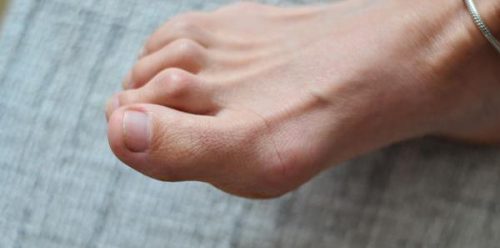
7) Foot warts and good shoes
On the feet, plantar warts are small, rough growths. The greatest pressure-bearing parts of the feet, the balls and heels, are where they frequently appear. A wart may also develop inward under a hard, thick layer of skin as a result of this pressure (callus).
Plantar warts can cause discomfort. When you exert pressure on your foot while walking, one of the first indications you could experience is pain or tenderness. Your plantar skin may have thickened, or you may see tiny black dots on your foot that are actually dried blood.
Foot warts are treated with medicated pads and ointments. It should be noted that every wound on the plantar surface is not a wart. Black or dark brown warts can indicate a type of skin cancer and need to be examined by a doctor immediately.
8) Heel pain
Usually, relieving this pain only requires resting, massaging and stretching the painful heel area, heating the area, and changing shoes. Be careful to consult a podiatrist if the heel pain doesn’t go away. Generally, the doctor will begin treatment by recommending medication, the good shoes, or specific stretching exercises. The doctor uses injectable medications in more complicated instances and rarely performs surgery.
9) Neuroma
An inflamed nerve may result from nerve stimulation. This situation is called the norm. Neuroma can show itself anywhere on the body. Morton’s neuroma, also referred to as the most common type, develops between the toes. A little nerve in the toe is compressed right here, in the space between the finger, knuckle, and shoe joints. Pain might be caused by pressure from improper footwear.
Using the good shoes, especially in the toe area, along with medicated insoles and pads, can help treat Morton’s or Neuroma foot. If the problem continues, the injured nerve may sometimes be removed surgically.
10) Diabetes, diabetic foot and good shoes
Diabetes may result in diabetic neuropathy, or nerve damage, which can cause tingling and pain and cause you to lose feeling in your feet. A diabetic person may not feel a blister on his foot or a pebble inside his sock because he may have lost sensation in his feet. Also, it can result in cuts and sores that can become infected and spread. Anyone with diabetes has to have regular foot examinations and checkups to prevent problems, including foot ulcers and foot injuries. Correct shoe size can protect diabetic feet and minimize the possibility of ulcers.
11) What is the good shoe?
Podiatrists or physiotherapists are not shoe manufacturers, but they usually recommend that everyone use shoes that cushion and support their feet, feel comfortable, and fit well.
Pointed shoes, barefoot shoes that have a very thin sole, and a stiletto heel that has a long, thin, high heel cause double pressure on the toes. This issue can cause calluses, heel spurs, and neuromas.
12) How to choose standard and good shoes?
Try on shoes later in the day. At the end of the day, the feet are at their largest size. To buy shoes, consider the following:
- The shoes should fit just right. The comfort of shoes is reduced by wearing thin and sticky socks.
- The shape of the shoe should be similar to the foot, and in this case, the toe should comfortable and the heel is supported.
- The sole of the shoe should be shock-absorbing, light and not high-heeled.
- The material of the shoe is very important in terms of breathability and air circulation. Wool, cotton shoes and leather shoes are suitable materials for good shoes, but never rubber shoes.
- Feeling comfortable in all situations when using shoes is very important. Do not buy shoes that are too tight from the back, the front, or the sides.
13) Characteristics of running and walking shoes
Wide, padded heels and soles are essential in running shoes. There should be a minimal heel-to-toe drop that considers 6 mm or less, and the toe area should be comfortable enough to allow for easy toe movement. The big toe and the end of the shoe must be separated by spaces. To protect the nails, you must have enough space in this area.
Running shoes should be flexible but not loose. The heel part of these shoes is made strong and full. The soles of these shoes are made in the form of a pillow to absorb possible shocks during running and not stick to the soles of the feet. EVA material is suitable for the soles of these shoes.
Walking and running shoes have support in the arch part of the foot that helps them be snug without slipping.
14) Foot doctor
We can refer to podiatrists, orthopedic specialists, or technical orthopedic clinics to examine and check the health of the feet. In these centers, in addition to a detailed examination using a foot pressure scanner and a gait analysis system for examining posture problems, custom-made or orthopedic insoles are made for patients.

 فارسی
فارسی